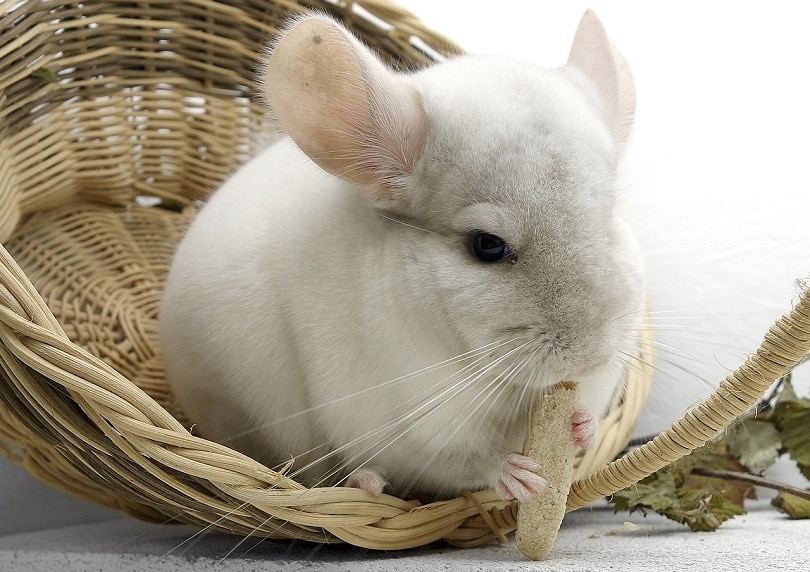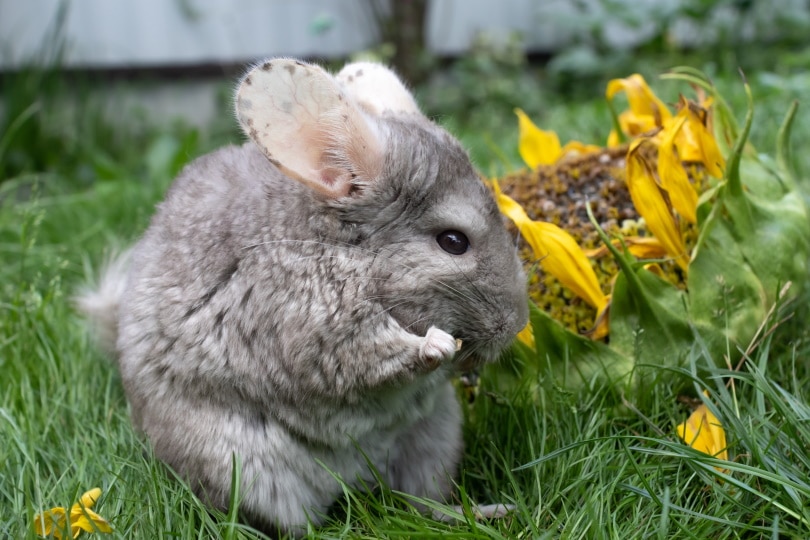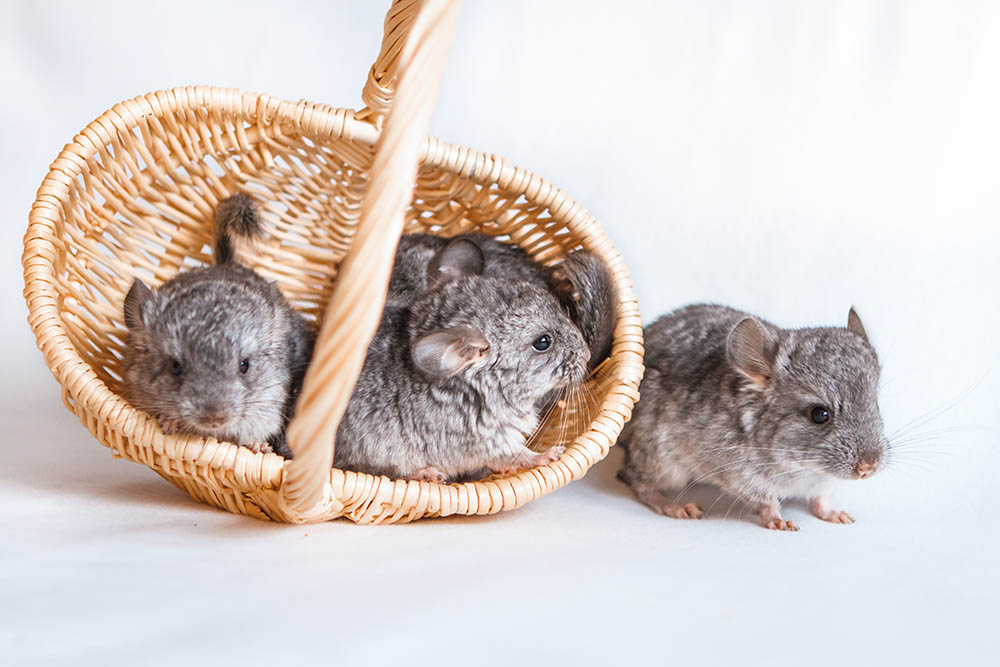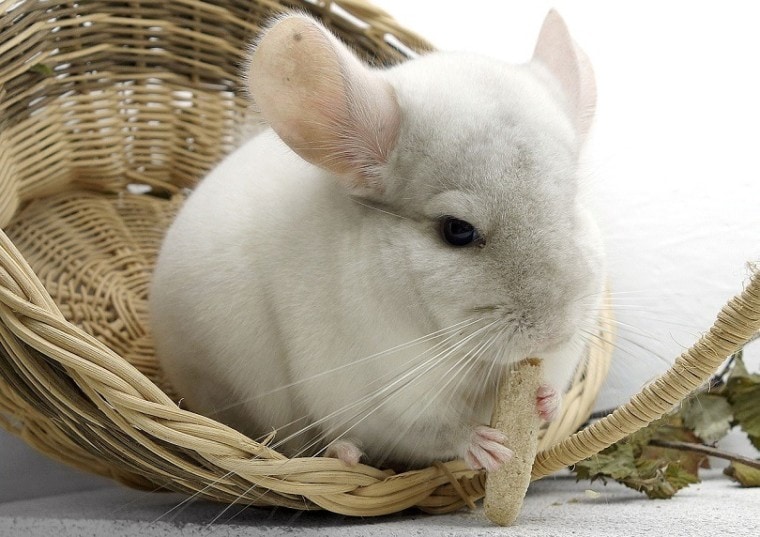
Is there any animal out there that’s softer than a chinchilla? With their fluffy bodies and tiny hands, chinchillas have captured our hearts and become popular exotic pets in the United States. As rodents, these stand out as some of the cutest. But aside from their adorable looks, not many people know much more about these interesting creatures. Unfortunately, chinchillas have become victims of our greed. Still, it might help people make more informed decisions about owning them as pets if they were to read about some interesting chinchilla facts and why they’re crucial to our natural world.
The 12 Chinchilla Facts
1. There are two species of Chinchilla.
There are only two living species of chinchilla. The first is the short-tailed chinchilla, and the second is the long-tailed chinchilla. The long-tailed one is more common in the pet trade world. Other differences between these two are that the short-tailed has a heavier body with thicker shoulders and necks. This difference could be because they live higher up in the Andes mountains and require thicker bodies to keep warm.
2. They live relatively long lives.
Compared to other rodents, chinchillas live quite a long time, especially in captivity. They survive up to 10 years in the wild and up to 20 in captivity. The average age of most other rodents is around 8 years old.
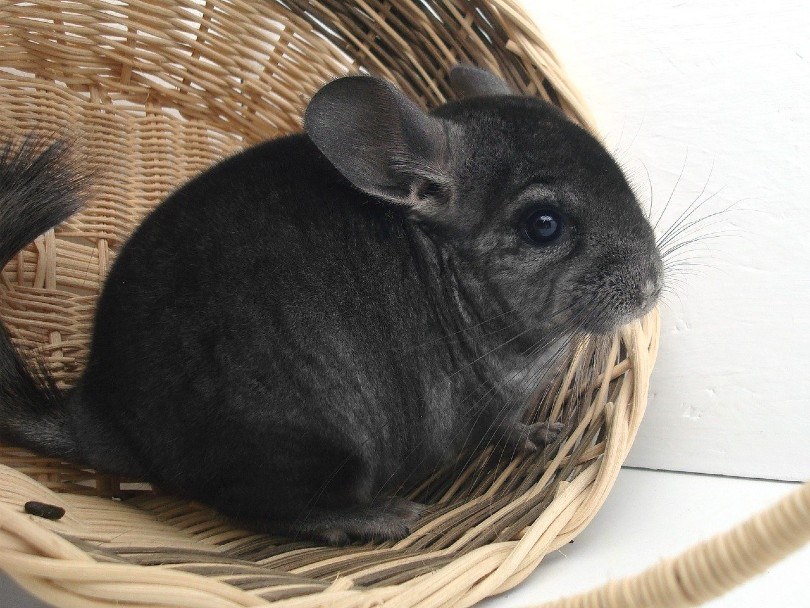
3. Chinchillas are herbivores.
Chinchillas spend most of their time foraging for plant foods. They eat whatever vegetation grows around their habitats, like fruits, flowers, grasses, and leaves. There are times when they will eat insects, but this act is usually when food is scarce in dry areas in the wild.
4. Chinchillas have the densest fur of all land mammals.
Out of all the land mammals on Earth, these small rodents have 20,000 hairs per every square inch of their body. That means anywhere from 50 to 75 hairs grow out of a single hair follicle. Humans can only produce two or three per hair follicle.
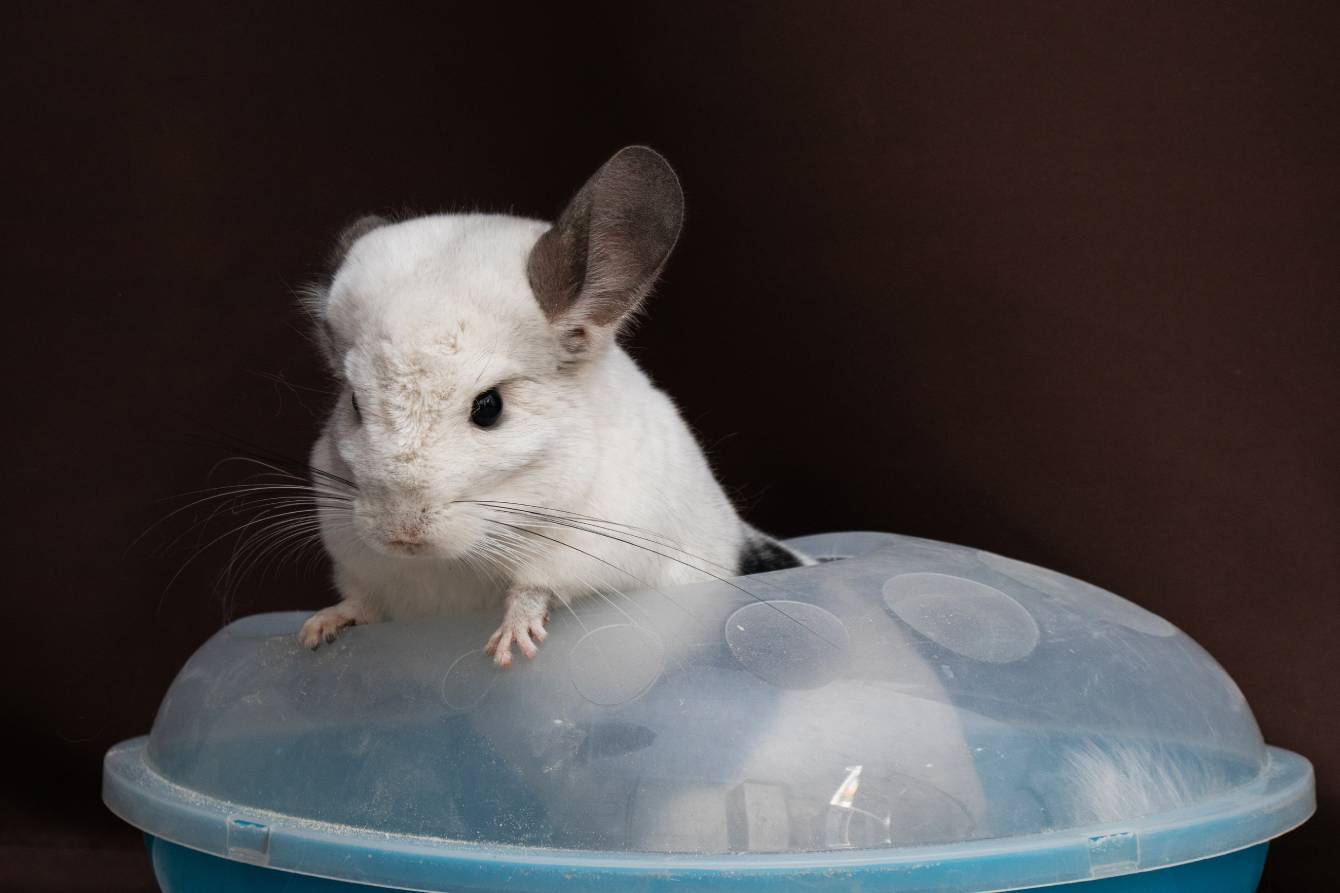
5. They rarely get ricks or fleas.
Because of the density of their fur, skin parasites have an extremely hard time latching onto these mammals. They can still make their way toward the skin on parts where the coat is thinner, like the belly, face, ears, and feet, but it’s not very common.
6. They bathe in dust.
Could you imagine how long it would take your hair to dry if you had that much of it on your head? Instead of taking baths in the water, chinchillas roll around in the dust. The fine particles remove grease and any other loose particles on their fur. If a chinchilla does get wet, it could get hypothermia, or fungi could grow in its fur.
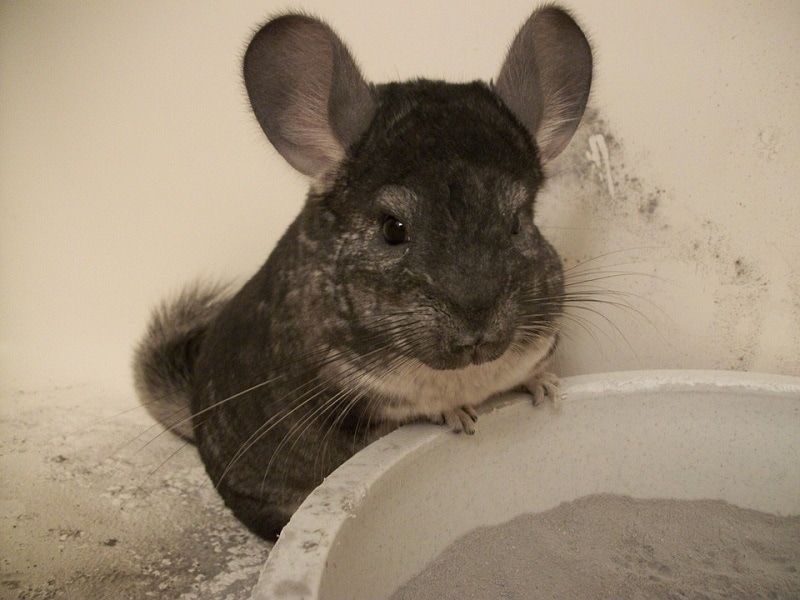
7. They can shed fur to escape predators.
Being quick sometimes isn’t enough to get away from a predator that’s chasing you. Chinchillas are able to shed off large patches of fur that the predators latch onto when they catch them. This is called fur slipping and happens in stressful situations, when they’re stuck, or when somebody holds them too tight.
8. Females give birth two times per year.
Most chinchillas breed between the months of November and May in the northern hemisphere and between May and November in the southern hemisphere. The pregnant females carry her kits for 111 days in the womb, and they can give birth to up to 6 kits. However, it is more common for them to only have 2 kits.
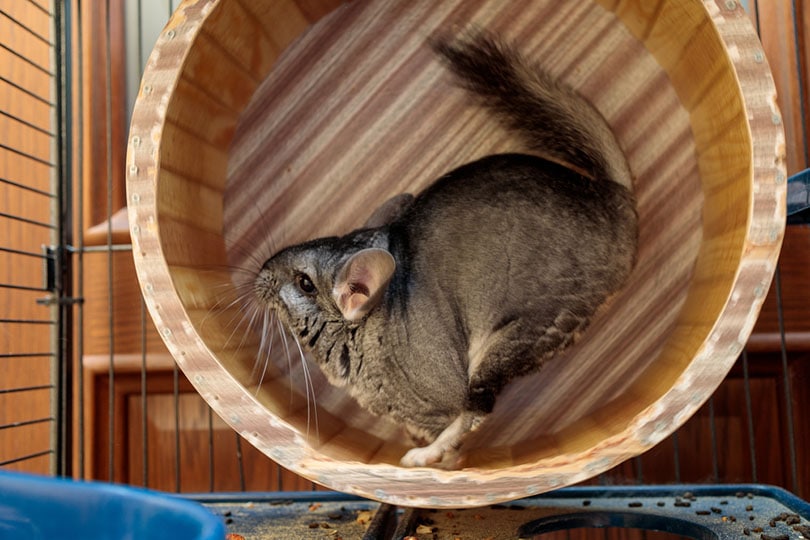
Most people who own a chinchilla only keep one at a time. Think of chinchillas as rabbits or Guinea pigs. They thrive as social animals because there is safety in number. There have been documented wild herds with over 100 individuals.
10. They have excellent hearing.
How could you not hear well when you have ears that big? Chinchillas have sensitive hearing that helps them detect any predators lurking close by. However, this also makes them more likely to become overwhelmed or startled in loud homes.
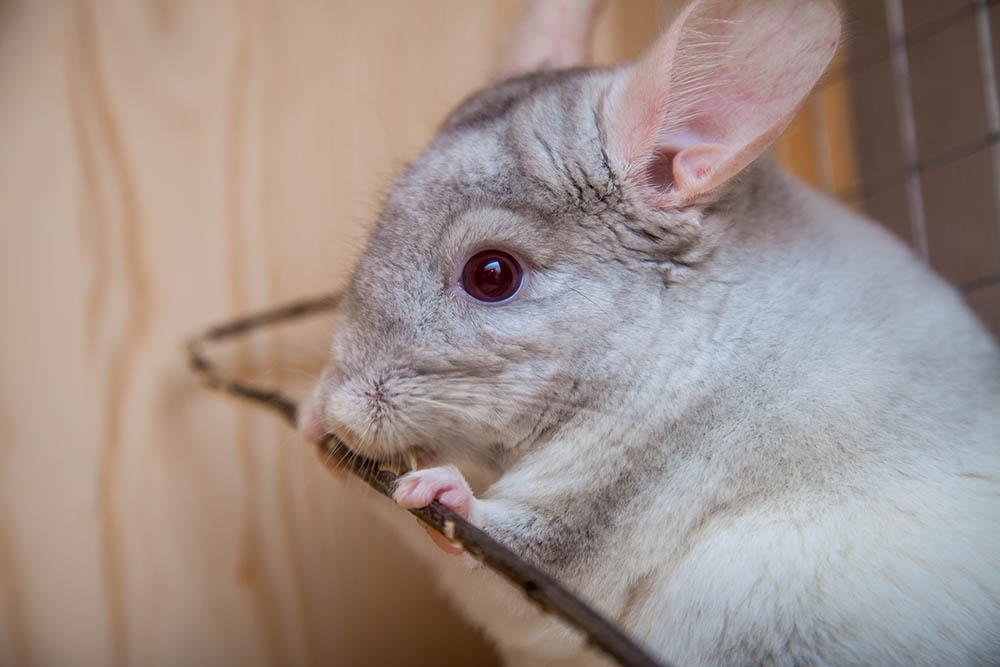
11. They can jump six feet high.
Another way for chinchillas to avoid predators is to jump. Even though they’re small, some of them have been known to jump three feet hide. They might also hide in crevices or spray urine as a defense mechanism.
12. Chinchillas are endangered animals.
Chinchilla hunting began in 1828, and humans have driven them to near extinction. They are hunted for their highly coveted fur, although the Incas used to hunt them for meat. The government currently prohibits all forms of trapping and hunting, but it is still difficult to regulate.
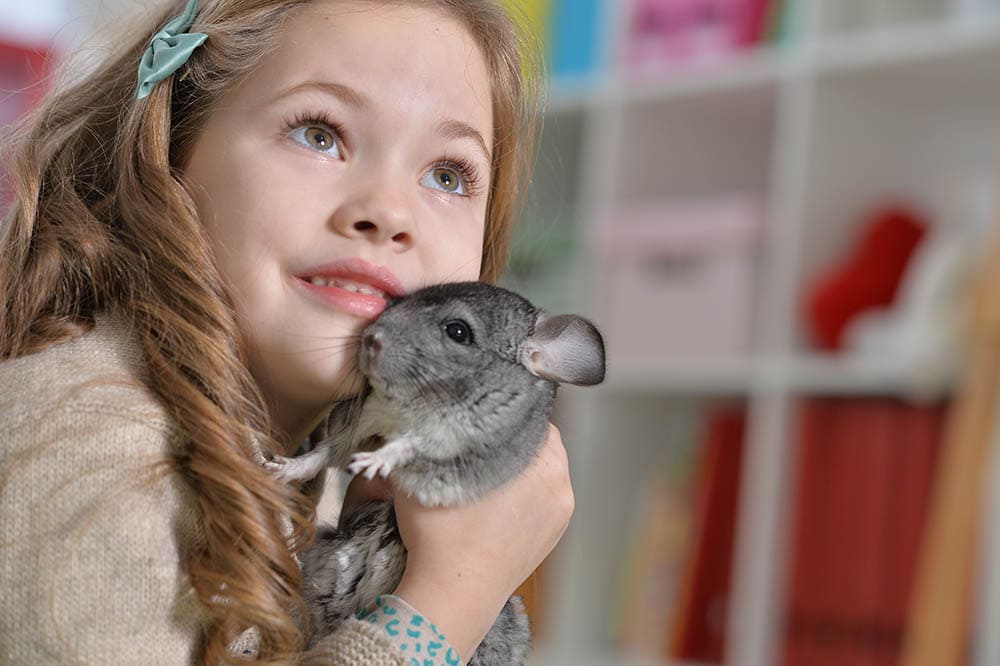
Final Thoughts
We understand the appeal of wanting to own a chinchilla as a pet. Why wouldn’t you want to cuddle with one of the softest mammals in the world? Even though we can love and care for these animals as pets, it’s better to protect them by defending their habitats and putting more hunting regulations into place. If we want these animals to stick around, then we must stop viewing them as possessions and respect their purpose in wild habitats.
You may also want to read:
- What Do Chinchillas Eat in the Wild and as Pets? Diet & Health Facts
- Are Chinchillas Hypoallergenic? Our Vet Explains Facts & FAQs
Featured Image Credit: benjamingross83, Pixabay

